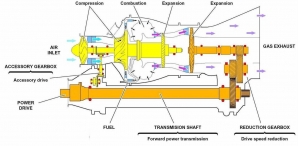Visakhapatnam airport areas reel under heatwave
Tuesday, 01 April 2014 06:32
VISAKHAPATNAM: Even as scorching April makes its debut, the Port City, particularly areas surrounding Visakhapatnam airport, have already been in the grip of a heatwave. In fact the prolonged and excessively hot weather accompanied by high humidity has been giving a tough time to the general public, particularly motorists, vendors and labourers, in areas surrounding Vizag Airport such as Gajuwaka, Gopalapatnam, Steel City, Kurmannapalem and NAD Kotta Road and towards Anakapalle road on National Highway-16 over the past four days.
Weathermen at the Cyclone Warning Centre (CWC) at Visakhapatnam said that Visakhapatnam Airport had been recording a maximum temperature of more than four degree Celsius as against the normal maximum temperature of 35 degree Celsius over the last four days.
According to observations of the CWC, Vizag Airport registered a temperature of 41 degree Celsius (6 degree Celsius above normal) on March 28, 40 degree Celsius on March 29, 39 degree Celsius on March 30 and 41 degree Celsius on March 31 till 5.30 pm.
"We can say that heatwave conditions have been prevailing at Vizag Airport in the city. However, there are no such problems in the city limits as the maximum temperature levels in Waltair have remained close to the normal of 31 degree Celsius," said a senior CWC official. Waltair recorded temperatures of 33.3 degree Celsius on March 28, 32.6 degree Celsius on March 29, 32.4 degree Celsius on March 30 and 35 degree Celsius on March 31.
According to Prof OSRU Bhanu Kumar, professor emeritus, department of meteorology and oceanography, Andhra University, if any area registers more than 4 degree Celsius temperature above normal continuously for three days then heatwaves can said to be prevailing in the area."
Prof Bhanu Kumar underlined the need for preventive measure by the officials concerned, including Greater Visakhapatnam Municipal Corporation (GVMC), to check loss of human or animal life due to the soaring mercury.
Speaking to TOI, GVMC chief medical officer, M Satyanarayana Raju said that with government considering heatwaves as a natural calamity prevention of deaths due to sunstrokes had been taken up under the national disaster management plan. "We are presently negotiating with non-governmental organizations and even politicians, in view of the elections, to set up water kiosks equipped with first aid kits. With the mercury touching 40 degree Celsium, we are identifying locations to set up water kiosks," said Satyanarayana Raju, adding that the main symptoms of sun strokes were severe headache, vomiting and blurry eyes and it can be prevented by frequent intake of liquids like water and butter milk.
Our Packages



News & Events
Chennai International Airport completes its first phase of flood-proofing after deluge last year. Is it enough?
Monday, 14 November 2016 05:40
The employees of the Chennai International Airport can’t forget how water engulfed the tarmac on December…Nine flights diverted over Delhi smog
Monday, 07 November 2016 05:49
JAIPUR: Nine flights, including three chartered planes were delayed by 4-5 hours from landing in Delhi…From The Blog

